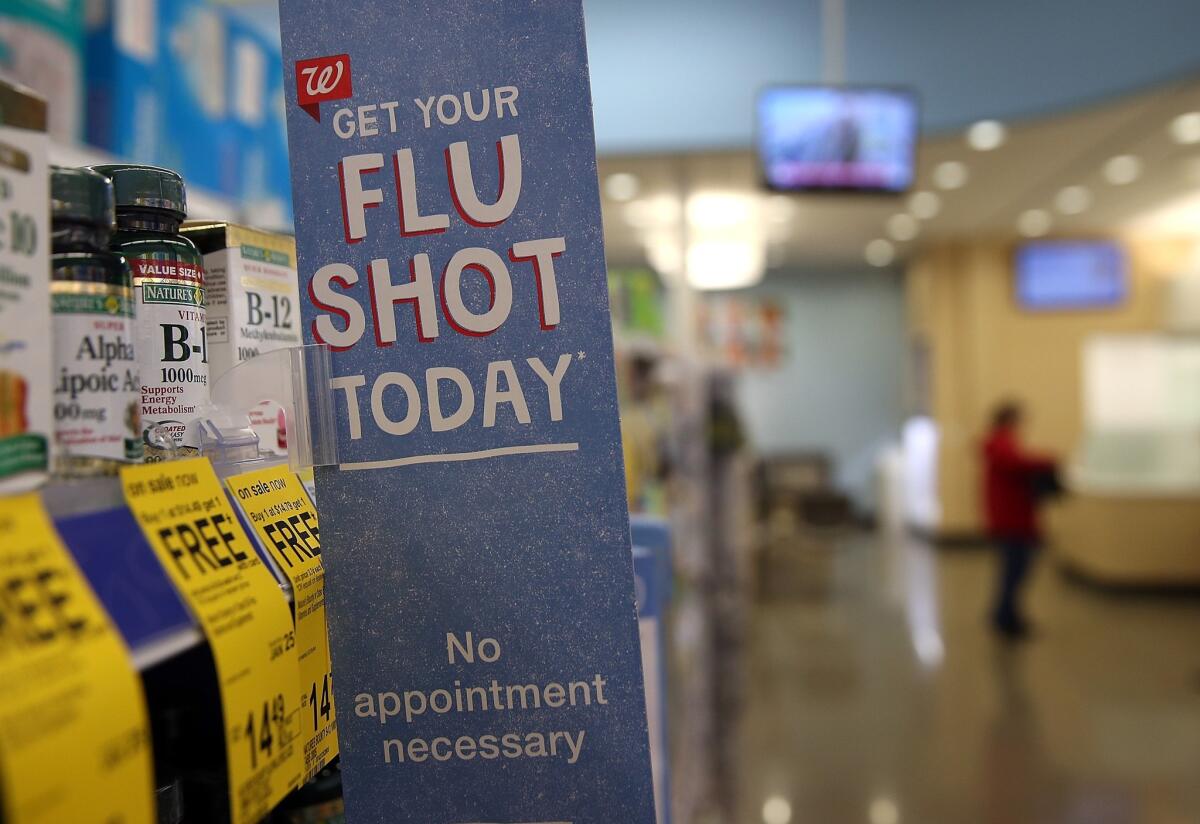Opinion: Mandating preventive care without co-pays is good, but it’s not ‘free’

- Share via
The Department of Health and Human Services released a report Friday declaring that 76 million Americans with private insurance became eligible for more preventive services with no out-of-pocket fees as a result of the 2010 healthcare law, the Patient Protection and Affordable Care Act (a.k.a. Obamacare).
Because Democrats are counting on female voters to help them at the polls in November, the report highlighted how women had been helped by that aspect of Obamacare. “Altogether, a total of 48.5 million women are estimated to benefit from free preventive services,” it stated.
But as new HHS Secretary Sylvia Burwell surely knows, given her time as deputy director of President Clinton’s Office of Management and Budget, there is no such thing as “free” services, particularly not in the world of healthcare.
Just because a service is no longer subject to a deductible or co-pay, that doesn’t mean the recipient isn’t paying for it. Instead, it means the cost of such services are factored into the premiums that everyone with private insurance pays.
The “free” preventive care line will no doubt be repeated ad infinitum Monday, when the Supreme Court is expected to hand down its decision in the Hobby Lobby case. Hobby Lobby’s owners challenged the mandate that employee health plans include contraceptives with no out-of-pocket costs, arguing that it violated their religious beliefs.
Not to be too cynical here, but the report helps the administration put the preventive services mandate in a much more positive light. It’s not an attack on religious liberty; it’s free healthcare!
Except that it, umm, isn’t.
(At least Burwell didn’t play the “free” card in her comments about the report Friday. “Today’s findings are just one more indicator that the Affordable Care Act is delivering impact for millions of people nationwide,” she said in a news release. “For millions of Americans, it means no longer having to put off a mammogram for an extra year. Or it means catching a problem early enough that it’s treatable.”)
Consider the issue from the industry’s point of view. When Ms. Smith goes in for a “free” mammogram, one or more laboratory technicians give her the exam, using expensive equipment and supplies. Then a doctor spends time reading the films. All of those costs have to be paid by Ms. Smith’s insurer, which may be a nonprofit but wouldn’t be mistaken for a charitable foundation. So instead of asking Ms. Smith to cover some or all of the cost through her deductible and co-insurance, it builds what it expects to spend on mammograms and other preventive services into the premiums it charges for her plan.
According to the no-partisan Kaiser Family Foundation, just how much premiums are affected by the preventive services mandate is hard to measure. Some private plans already covered many preventive services with no out-of-pocket charges because they could help lower healthcare spending in the long run. That’s particularly true for services designed to prevent obesity. On the other hand, dispensing with co-pays means more people will use the services, and that increase won’t necessarily be offset by a reduction in treatment costs down the road.
“Taking all these factors into account,” Kaiser wrote in 2011, “HHS estimates that premiums will increase by approximately 1.5 percent on average in non-grandfathered plans due to required coverage of prevention services (other than additional recommendations related to women’s health).” In other words, even the administration recognized after the law was passed that preventive services wouldn’t be “free.”
Misleading commentary aside, eliminating the co-pays and deductibles for preventive services was a smart thing to do. The point of healthcare reform is to change the system from one built around making sick people well into one that rewards providers at least as much for keeping people healthy. That means changing the incentives for patients as well as providers.
Shifting the cost of preventive services from out-of-pocket charges to premiums also has the effect of spreading the costs broadly across the population. Men pick up more of the cost of mammograms; women pick up more of the cost of prostate cancer screening. Childless adults contribute more to the cost of kids’ vaccinations. Thin people pay a higher share of the cost of obesity prevention programs. And so on and so on.
And make no mistake, some people will come out ahead in the new system. That’s because they will use so many or such expensive preventive services, they’ll save more on the out-of-pocket costs they’re avoiding than they’ll spend on higher premiums. And others will save less.
Although some readers consider this a form of socialism, it’s really just a consequence of insuring the population through pooled risks. And that’s a good thing, considering the unpredictable nature of illness and injury.
The economics of healthcare are notoriously opaque. Anyone who pores through a hospital bill knows how little the charges have to do with what the services rendered and materials used actually cost. So it doesn’t help when the administration suggests that, thanks to Obamacare, people are getting something for free that used to cost them money.
Seventy-six million Americans may be able to go to their doctor’s offices and receive a preventive service without having to pay the co-pay or deductible they used to have to fork over. But they’re still paying for those services through their insurance premiums. And so are the insured Americans who don’t receive preventive care.
Follow Healey’s intermittent Twitter feed: @jcahealey
More to Read
A cure for the common opinion
Get thought-provoking perspectives with our weekly newsletter.
You may occasionally receive promotional content from the Los Angeles Times.










